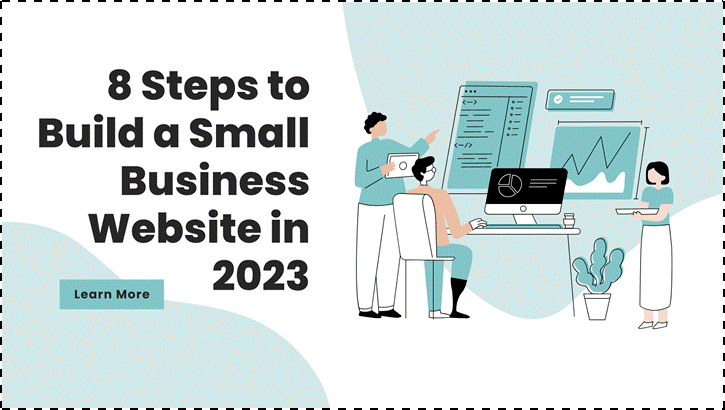
8 Steps to Build a Small Business Website in 2025
It’s no longer practical to run a business, even a brick-and-mortar store, without an online presence. Even just a basic, well-designed website can give you an edge in your industry.
In this blog, we will walk you through crucial design considerations, best tools, and how to launch your website.
Step 1: Choosing a Domain
Keep your domain name descriptive yet easy to remember and type in. Keep it short, and don’t use abbreviations or numbers. For the suffix, .com is still the main go-to. Once decided, purchase the domain from a reputed & affordable domain registrar like Namecheap.
Step 2: Choosing a Web Host
Website builders like Squarespace charge recurring subscription fees ($16/mo). So, it’s recommended to develop your own website from scratch. A shared web host from Bluehost will be an affordable option for small businesses.
Step 3: Developing Your Website
Choose a design/theme that reflects your brand identity and is visually appealing. Focus on the user experience and the journey your users will go through as they navigate your website. Use plugins and widgets to add necessary functionalities to your website.
Step 4: Adding Your Pages
A good site is more than just a static homepage. You have to add more pages such as a detailed catalog of your products/ services and a blog section for company updates. Also, include as much information as you can in the Contact Us page.
Step 5: Creating Your Content
Include some information about the founder or staff on the “About” page so that people can put real names & faces to your brand. Make sure every page has a clear purpose and includes a call to action (like“learn more”, “sign up”, “contact us”, or “buy”).
Step 6: Setting Up Payments
While this step won’t apply to all, small businesses that want to sell online will need to integrate electronic payment systems with their websites. The easiest way to do this is by using e-commerce software or a payment gateway solution.
Step 7: Testing and Publishing Your Website
Make sure your website works on all major browsers and displays properly on mobile devices. Click through every page and feature on all major browsers to ensure images show up, links are proper, and the format looks smooth. If everything’s good, you can publish your website.
Step 8: Maintaining Your Website
Staying relevant is significant, so update your site frequently with blog posts on latest industry events, new products and offers, and company news to keep visitors coming back to your website. You should also check at least every month to make sure that your software and add-ons are up to date.
Final Thoughts
Developing a site for your small business is a low-cost investment that’ll establish your credibility and help you reach a wider audience than you ever could using traditional marketing techniques.
At Plusone Technologies, we have many success stories from small businesses that have already made the leap. Let us help you through the entire process – from setting up the web host to developing the website and testing it.


